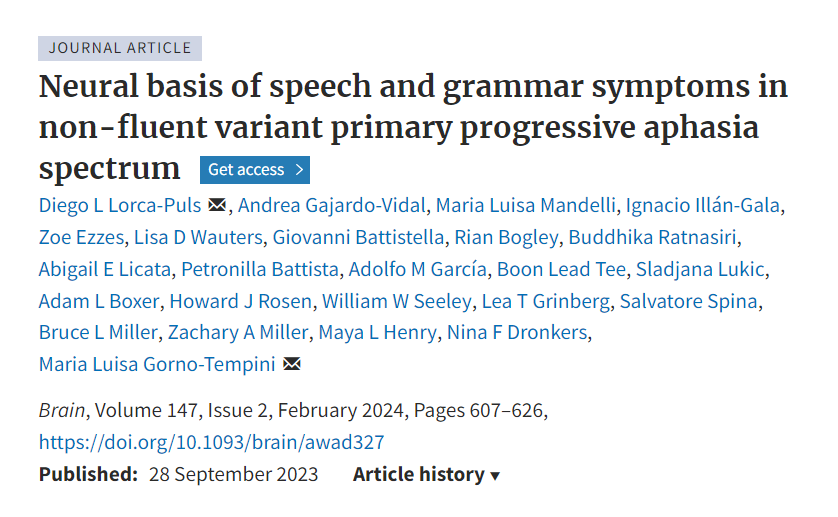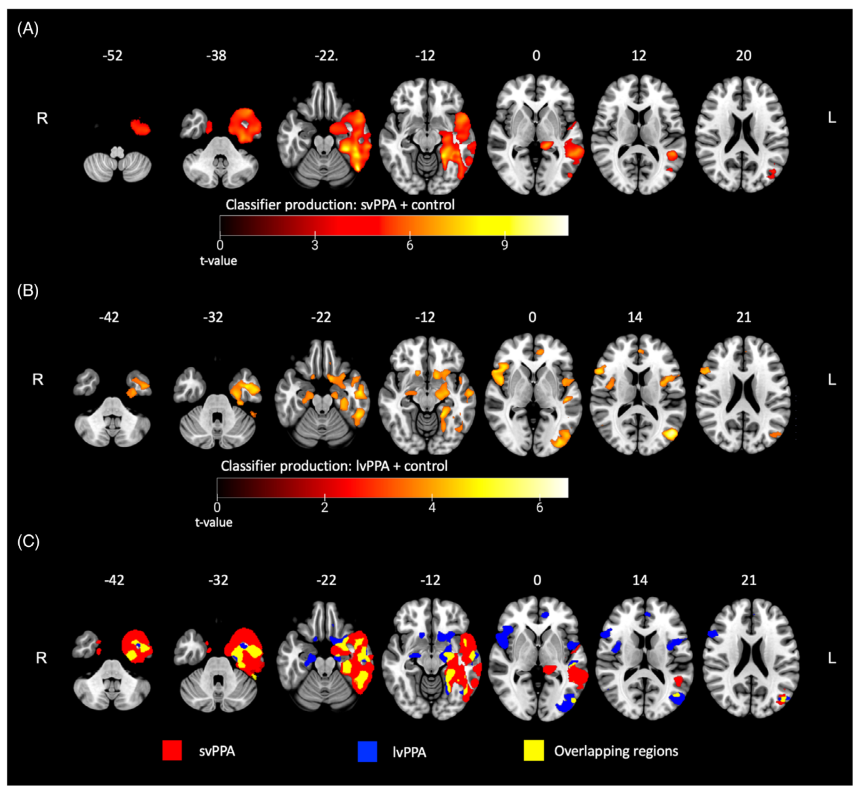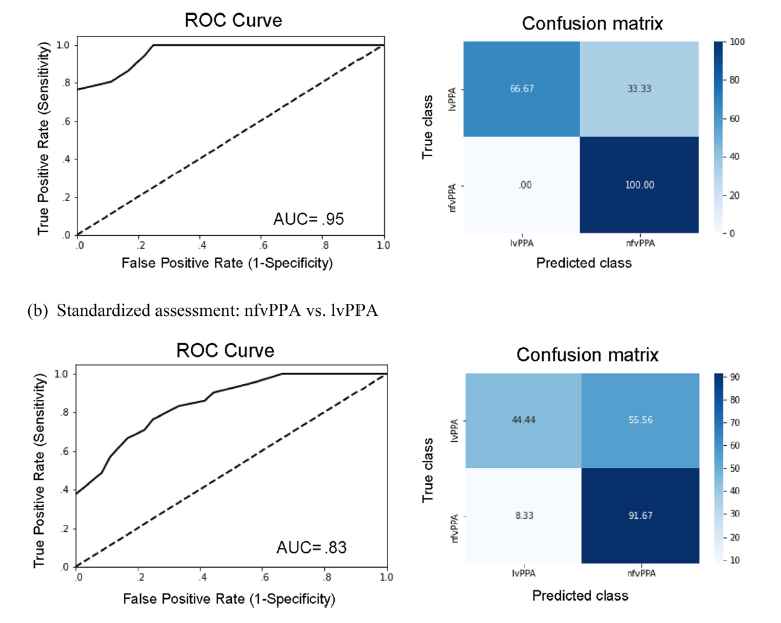Neural basis of speech and grammar symptoms in non-fluent variant primary progressive aphasia spectrum
Lorca-Puls, D. L., Gajardo-Vidal, A., Mandelli, M. L. […] García, A. M. […] & Gorno-Tempini, M. L. (2024). Neural basis of speech and grammar symptoms in nonfluent variant primary progressive aphasia spectrum. Brain 147(2), 607-626.
La variante no fluente/agramática de la afasia primaria progresiva (APPvnf) es un síndrome neurodegenerativo definido principalmente por la presencia de apraxia del habla (AH) y/o agramatismo expresivo. Además, muchos pacientes presentan disartria y/o agramatismo receptivo. Esto conduce a una variación fenotípica sustancial dentro del dominio del habla-lenguaje a través de los individuos y del tiempo, en términos tanto de la combinación específica de síntomas como de su gravedad. La forma de resolver esta heterogeneidad fenotípica en la APPvnf es objeto de debate. Los puntos de vista de «división» proponen entidades clínicas separadas: ‘apraxia progresiva primaria del habla’ cuando la AH se produce en ausencia de agramatismo expresivo, ‘afasia agramática progresiva’ (AAP) en el caso contrario, y ‘AH + AAP’ cuando los síntomas motores mixtos del habla y el lenguaje están claramente presentes. Aunque las intervenciones terapéuticas suelen variar en función del síntoma predominante (por ejemplo, AH frente a agramatismo expresivo), la existencia de solapamientos conductuales, anatómicos y patológicos entre estos fenotipos desaconseja trazar límites tan claros. En el presente estudio, contribuimos a este debate mediante el mapeo del comportamiento y el cerebro en una cohorte prospectiva de pacientes bien caracterizados con APPvnf (n = 104). Buscamos avanzar en la comprensión científica de la APPvnf y la base neural del habla-lenguaje descubriendo en qué parte del cerebro el grado de atrofia basado en resonancia magnética se asocia con la variabilidad entre pacientes en la presencia y gravedad de AH, disartria, agramatismo expresivo o agramatismo receptivo.
Para acceder al artículo, hacé click aquí.
Neural basis of speech and grammar symptoms in non-fluent variant primary progressive aphasia spectrum
Lorca-Puls, D. L., Gajardo-Vidal, A., Mandelli, M. L. […] García, A. M. […] & Gorno-Tempini, M. L. (2024). Neural basis of speech and grammar symptoms in nonfluent variant primary progressive aphasia spectrum. Brain 147(2), 607-626.
The non-fluent/agrammatic variant of primary progressive aphasia (nfvPPA) is a neurodegenerative syndrome primarily defined by the presence of apraxia of speech (AoS) and/or expressive agrammatism. In addition, many patients exhibit dysarthria and/or receptive agrammatism. This leads to substantial phenotypic variation within the speech-language domain across individuals and time, in terms of both the specific combination of symptoms as well as their severity. How to resolve such phenotypic heterogeneity in nfvPPA is a matter of debate. ‘Splitting’ views propose separate clinical entities: ‘primary progressive apraxia of speech’ when AoS occurs in the absence of expressive agrammatism, ‘progressive agrammatic aphasia’ (PAA) in the opposite case, and ‘AOS + PAA’ when mixed motor speech and language symptoms are clearly present. While therapeutic interventions typically vary depending on the predominant symptom (e.g. AoS versus expressive agrammatism), the existence of behavioural, anatomical and pathological overlap across these phenotypes argues against drawing such clear-cut boundaries. In the current study, we contribute to this debate by mapping behaviour to brain in a large, prospective cohort of well characterized patients with nfvPPA (n = 104). We sought to advance scientific understanding of nfvPPA and the neural basis of speech-language by uncovering where in the brain the degree of MRI-based atrophy is associated with inter-patient variability in the presence and severity of AoS, dysarthria, expressive agrammatism or receptive agrammatism.
To access the full paper, please click here.



